How Wide Are Bike Handlebars?
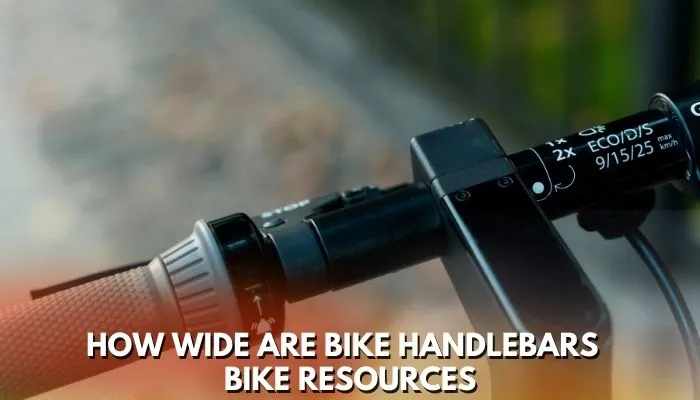
There is a tendency to overlook handlebars when considering the key bicycle parts that influence riding, although they will have a massive effect. As they influence your alignment and strength, they determine how we sit, stand, move, bounce, and perform all those other movements. There is no “one size fits all” formula for calculating how wide are bike handlebars should be because every cyclist is distinctive.
Even though handlebar width is an issue of preference and primarily determined by personal liking, cyclists who seem to be taller, bulkier, and have muscular forearms will normally require wider handlebars. The forearms and shoulders of cyclists with thin shoulders may appear shorter and thinner.
Making sure your handlebars are the right width for your body can help you maintain the grip of your front wheel and then get into the most productive riding position when your hands, elbows, and shoulders are in synchronization.
Table of Contents
How Wide Are Bike Handlebars | Size And Measurements
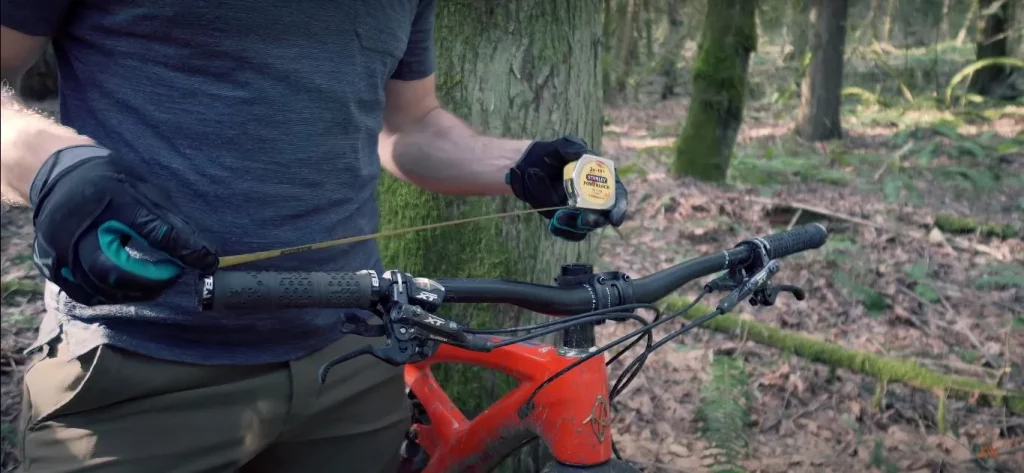
You might be thinking how wide should my handlebars be? The optimal handlebar width for road bikes is defined by how pleasant it is to ride. You generally ride a road bike for longer distances while remaining motionless.
As a consequence, irritations and pains are easily induced by an uncomfortably oriented arm. There is no need for a bigger handlebar on a road bike to enhance handling because the steering is light. Additionally, the aerodynamic advantage of a narrower handlebar is inadequate to make up for the comfort compromise.
Your arms must be in the most comfortable position possible for the greatest level of comfort. As a result, your arms must be extended straight ahead. The handlebars for this positioning should be the identical width as your shoulders. When measuring shoulder width, your shoulders’ widest skeletal point functions as your point of reference.
In order to determine the width of the handlebars, center-center measurements are taken. The measurement can be different if the makers measure around the exterior of the handlebars which results in a measurement that is 23.8mm bigger.
Bridging the Gap
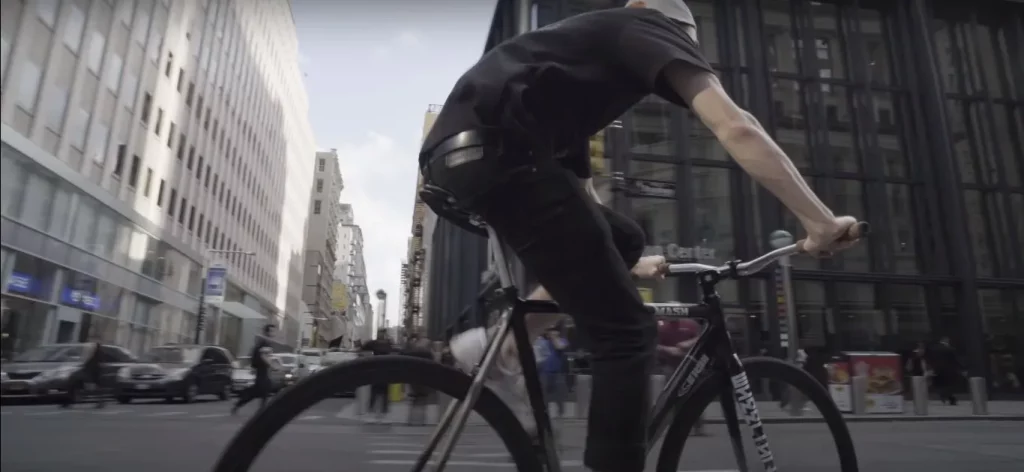
The terrain restricts the breadth of the bars. A cyclist may fracture a finger, rupture a glove, or even have a major accident where they disengage from their bike if they clip a handlebar while negotiating an extremely tight portion of singletrack through a forest.
You will never be conscious if you are riding a handlebar that may be too wide for the ground until a trail designer proactively analyzes the narrowest spot of their trail at handlebar elevation and displays it as a notification at the trail entrance.
In actuality, the incredibly narrow trail portions only make up a very small percentage of the overall riding experience. On a trip where you are traveling thousands of meters, one cannot configure their handlebars for the potential of a half-meter of the narrowly packed trail.
Therefore, we are unable to use the overriding parameter of handlebar width to choose the handlebar width in densely forested terrain. The best benchmark is based on biology, specifically shoulder width.
What suits your bike the most?
When it comes to how wide are bike handlebars, all motorcycles are not equal, and neither are all individuals. The indicated reach measurements depend on the stem and handlebar configurations specified by the manufacturer before altering the width of your handlebars. When you change the width of your handlebars, your bike will ride differently.
A wider handlebar will boost your front end’s steadiness and provide you with a more peaceful sensation than before. While shifting to a narrower one will startle the front part of your bike, making it more restless and easier to maneuver.
If you want to keep the way your bike tackles the terrain completely, you can compensate for the new bar size. It can be done by switching between a longer stem and a shorter stem based on whether you’re trimming or enlarging your bars.
The online bike handlebar width calculator
Even though it may look cool to ride with extremely broad handlebars, doing so could seriously harm the rider and increase the risk of injury. First of all, it is important to remember that each rider is shaped differently.
Therefore handlebar width should indeed be based on the rider’s physical appearance. The digital bike handlebar width calculator can determine an ideal handlebar width. This estimated value offers a good starting point on you to base your selection.
Since you can easily take more off but not add extra width, it is generally recommended to try broader than you assume. These numbers are just estimates of actual values. If you still need clarification about whether the handlebar width is the correct one for you after using the calculator, consult a professional bike technician.
Width of the road bike handlebar
Road bicycle handlebars usually vary in length from 38 cm to 46 cm. There are many distinct factors to take into account, but the most essential is your physical appearance, notably the length from shoulder to shoulder.
The fitter must scan you throughout your shoulder joints when you get suited for a bike in order to select the correct bar for you. Your handlebars’ width should be chosen according to how much gap there seems to be between your shoulder joints. Your arms will be in a comfortable state after you have done this.
Your riding technique is important in addition to your body dimensions. Different riding techniques have a major effect. Many riders probably want to keep their elbows out, whereas others wish to remain upright. Your riding stance is another element in addition to your riding style.
You still need to be at ease and have proper control of your vehicle once all of the measurement is finished. Personal preference is equally important, even though the measurement is a critical first step.
To keep in mind:
Additionally, it is important to understand that trends have influenced handlebar width. For instance, there can be a trend toward bigger bars for several generations before it is overtaken by an adverse trend later on.
The parts that professional bikers employ frequently have an influence on the features of the road bikes we see in stores. Although fashion trends are likely to modify, there is presently a general shift towards narrower widths, with professional riders preferring 38 cm and 40 cm in particular.
Width of mountain bike handlebars
Since road bikes were its major inspiration, mountain bikes’ handlebars were initially relatively narrow. However, because mountain riding depends mainly on steadiness, the dimensions steadily grow bigger as the bikes progress.
The permissible widths had evolved beyond recognition from road bikes by the point mountain biking had reached its highest point.
These days, when talking about how wide are bike handlebars, MTB handlebars are generally 740 mm or 760 mm in length. Compared to the corresponding on a road bike, this is considerably wider. Because there are so many distinct mountain bike disciplines, there seems to be a broader variety of size opportunities that exist.
Mountain bikes developed exclusively for downhill racing typically have extremely broad bars. Some downhill mountain bikes have an 820 mm width, which is considerably broader than the 600 mm width that used to be standard.
The Advantages of Narrow Handlebars
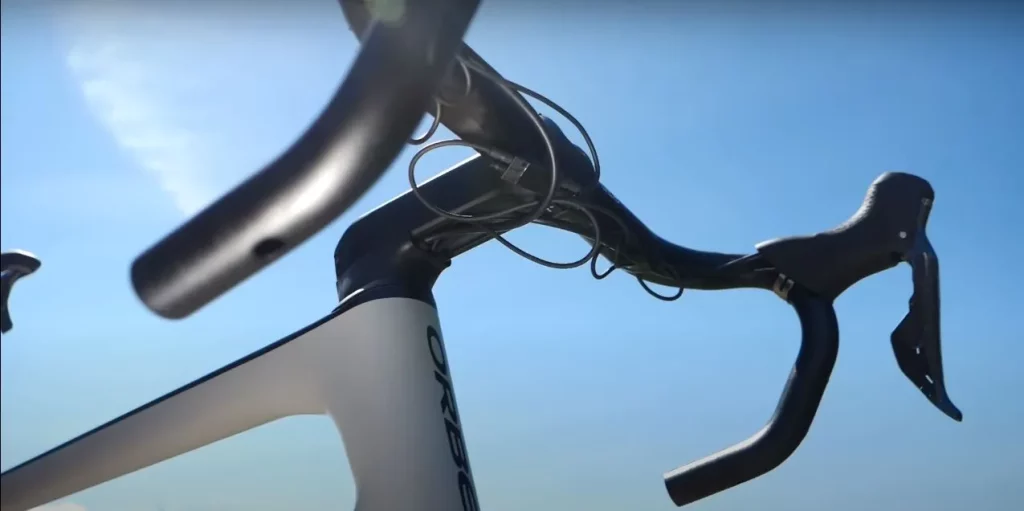
Why do bikers pick narrow or broad handlebars considering the variety of shapes and sizes available and the fact that body composition is not the prime concern?
- It is more aerodynamic for road cyclists to have narrower bars. The bars are a slight bit smaller, but then you are also advised to bring your elbows inwards, which promotes a more sleek posture.
- Professional cyclists will also claim that the narrow width enables them to bypass other riders’ bars without messing them up as they maneuver through the race.
- For most of us, it would be more feasible to escape mirrors from parked cars and handle traffic more effectively. But the narrowness might undoubtedly be advantageous.
So why, if narrow bars help in speed, wouldn’t more people select them? Well, lack of control comes with a price when gaining speed. The stability of the motorcycles decreases as the bars grow narrower. Therefore, a wider bar is likely more suitable if you want the most steady ride. Some riders prefer the broader bars since they are easier to pick up and acquire friction from when riding rapidly.
The Advantages of Wide Handlebars
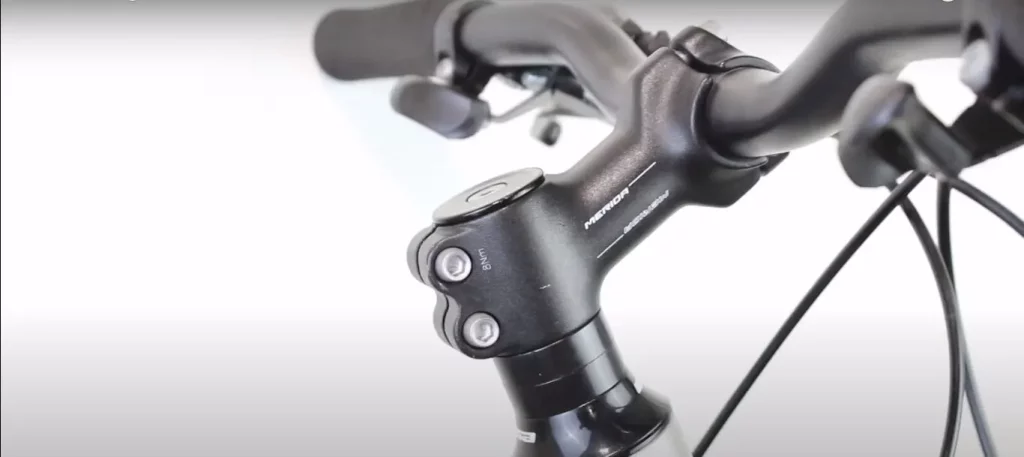
- Pulling against the width of broader bars can be beneficial for riders who wander around a lot, even when they are seated. Therefore, choosing the appropriate handlebar can be assisted by analyzing your riding position.
- The stability that a broader bar offers may be helpful if you are just starting up with road biking. A shorter handlebar has always been an option once you’ve acquired some experience.
- Consequently, you’ll move into a more aerodynamic posture and help boost your speed.
- There’s also a potential that you can prevent hitting rocks or trees effectively.
The situation is decidedly the contrary for downhill riders. For Downhill Mountain biking, stability is crucial. Riders can push the speed higher and higher because of the additional control that wide bars offer. This clearly overshadows any aerodynamic gain that thinner bars would provide.
FAQs:
How wide should the handlebars be on a mountain bike?
The rider’s physique and, more significantly, the diameter of their shoulders can be the only parameters used to choose handlebar width.
The range of handlebar widths for mountain bikes that would be most frequent is somewhere between 710 mm and 780 mm. The handlebars might have to be considerably narrower for shorter riders, and they may have to be a full 800 mm for extremely tall riders.
Do mountain bike handlebars that are 800mm wide work nicely?
The majority of riders find 800 mm wide handlebars to be excessively wide. Yet, if you are a particularly tall rider who loves to ride downhill hills, you would need the entire 800 mm width.
The key to selecting the suitable handlebar width is trying to strike a balance between a wide bar’s sturdiness and your body’s capacity to move, pull, and maneuver a handlebar that is narrower.
Is it true that broader handlebars are more comfortable?
No, never. Some individuals associate comfort with a wide handlebar’s impression of stability. The handlebar that best matches your shoulder width is usually the one that is most convenient for you.
Slide your grips and controls inside the handlebars to try new handlebar widths, and if you can, try narrower handlebars. It’s noteworthy that, contrary to what you might expect, the majority of the best downhill and mountain racers frequently use considerably narrower bars. This is because a narrower bar has so many advantages.
How can I determine the ideal handlebar width?
It is generally recommended to measure the distance between your two shoulder bones or, to use a more scientific term, the length between your two acromioclavicular (AC) joints when determining the appropriate handlebar width. This measurement specifies your starting point; for instance, if it is 38 cm, look for 38 cm bars.
Conclusion:
It is generally advised to begin by having yourself fitted for any major bike component, and handlebars are no exception. It is always necessary to know how wide are bike handlebars. Less breadth is required for a rider who is 5’3″ than for somebody who is 6’3″.
However, as previously mentioned, physique type is one of many important elements. The type of riding you’re likely to do should also be factored into the equation, as well as the area.
A road or mountain bike selection with acceptable sizing will work perfectly for many riders. A handlebar that is a bit shorter or longer would be preferred for individuals who desire more stability or who want to move faster.

Thank you for sharing your advice on bike painting! Taking apart the bike as much as possible is indeed a crucial step in achieving a professional and thorough paint job. Removing the drivetrain, wheels, handlebars, pedals, and other attached parts allows you to paint every nook and cranny of the frame, ensuring a smooth and even finish.
By disassembling the bike, you also reduce the risk of getting paint on components that shouldn’t be painted, such as the chain or braking surfaces. It may take a bit of extra time and effort, but the end result is well worth it.
If you have any more tips or tricks for bike painting or if there are specific aspects of the process you’d like to know more about, feel free to ask. We’re here to help fellow bike enthusiasts achieve their DIY projects successfully!
Happy painting! ??